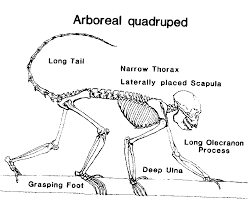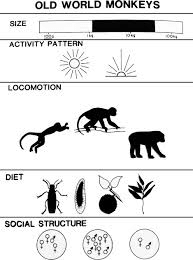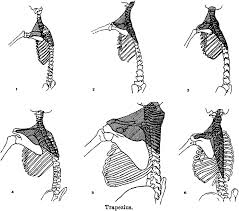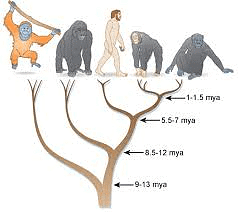Primate Adaptations (Arboreal and Terrestrial) | Anthropology Optional for UPSC PDF Download
Primate Adaptations
This article discusses the concept of primate adaptations, primate adaptation and evolution, Fleagle primate adaptation and evolution.

The word ‘primate’ in the Latin language means first. When the primate species were first sighted, they had very few features that helped us distinguish between them and other various species and mammals. On evolution, the primates gradually started to display few noticeable physical characteristics that enabled researchers to differentiate them from various other known living species. Primate adaptation is the way primates have adapted and survived over time.
A primate in simple language can be defined and said to be a mammal with long toes and fingers. The nails present on each toe and finger replace the wild claw that was first present. Shoulder joints are also present that allow the arms of a primate to swing and rotate. In addition to all this, a primate is well adapted with a very tough clavicle, binocular-based vision, and cerebrum that is developed enough. An example of a primate that attributes to all the aforementioned features is a Lemur.
What is Primate Adaptation and Evolution

Evolution is defined in simple words as the change in the internal and external attributes/characteristic features of a species that occurs for several generations. This change is noticeable and inheritable from one generation to the next generation.
Primate adaptation is defined as the process in which a living organism, especially primates, shows noticeable changes in their external and internal characteristics to get used to the situation or environment around them.
Many additional fossils and DNA evidence have been unearthed over the last century to support Darwin’s findings as he researched diverse adaptations in various primates.
Fingers and Toes
Earlier primates had claws in place of fingers on the hands and toes on the feet. They used these distinctive body features for a better grip. They used these claws to hold on to the branches of the trees as they swayed in their habitat. With an adaptation, there was a noticeable growth from the side of the hand or foot, which is now called a thumb and then called ‘Opposable Big Toe’. With evolution, these fingers and toes were used to walk, grab items and objects like food, weapons, etc. Some of the distinctive primate adaptation features are-

Nails at the Finger and Toe Ends
In the past, every mammal or primate had claws on their fingers and toes to scratch, dig in the ground, and protect themselves by using it as a means of defence. These strong, sharp claws were keratinised and transformed into nails with time and evolution. The ends of every toe and fingers are soft and delicate, protected by these nails that also provide a better grip to the primates. This adaptation is touch-sensitive, allowing primates to detect when they contact anything with their fingertips.
Position of the Eyes
Primates have eyes on the foreside of their heads. Many creatures possess eyes on the sides of their heads for greater peripheral vision or on the top of their heads to see while they are fully submerged in the water. The advantage of having both eyes on the front side of the face is that visual information from both eyes is received simultaneously, allowing the brain to construct a stereoscopic or three-dimensional vision. This allows the primate species to get a rough judgement of the distance and depth or height, thus allowing them to ascend or leap higher on a tree without falling.
Ball and Socket Joints
Primates possess in their bodies ball and socket joints, which in simple terms are also called a hip joint and a shoulder joint. The ball and socket joint, as the name defines it, are shaped like a ball and a socket where the ball fits in the socket and helps the hip and shoulder to move/rotate at an angle of 360˚. This adaptation made the limbs of a primate even more flexible. This adaptation allowed primates to climb effortlessly and quickly on treetops to find food.
Brain Size Became Larger

With additional features and abilities, the place to store and record information should also have been bigger. Thus, with evolution, the primates developed a larger brain because of the extra nervous information required to be processed in the primitive bodies; the brain would have to be larger to conduct all necessary work simultaneously. A bigger brain provides for higher intelligence and social abilities, in addition to survival qualities. Primate species are primarily social beings that live in families or groups and collaborate to make living simpler. As a result, primates tend to have very good and long lives.
Conclusion
This article is about the basics of evolution and the essential features developed in the primates’ appearance over time.
The primates’ most likely their ancestors, were tiny, quadrupedal, and arboreal animals that scurried over the tops of branches and ascended by burrowing their claws into the bark.
This article discussed the concept of Primate Adaptations, primate adaptation and evolution, Fleagle primate adaptation and evolution.
|
209 videos|299 docs
|
FAQs on Primate Adaptations (Arboreal and Terrestrial) - Anthropology Optional for UPSC
| 1. What are primate adaptations? |  |
| 2. What are arboreal adaptations in primates? |  |
| 3. What are terrestrial adaptations in primates? |  |
| 4. How do primate adaptations help them survive? |  |
| 5. Are primate adaptations solely physical or do they also include behavioral traits? |  |
















